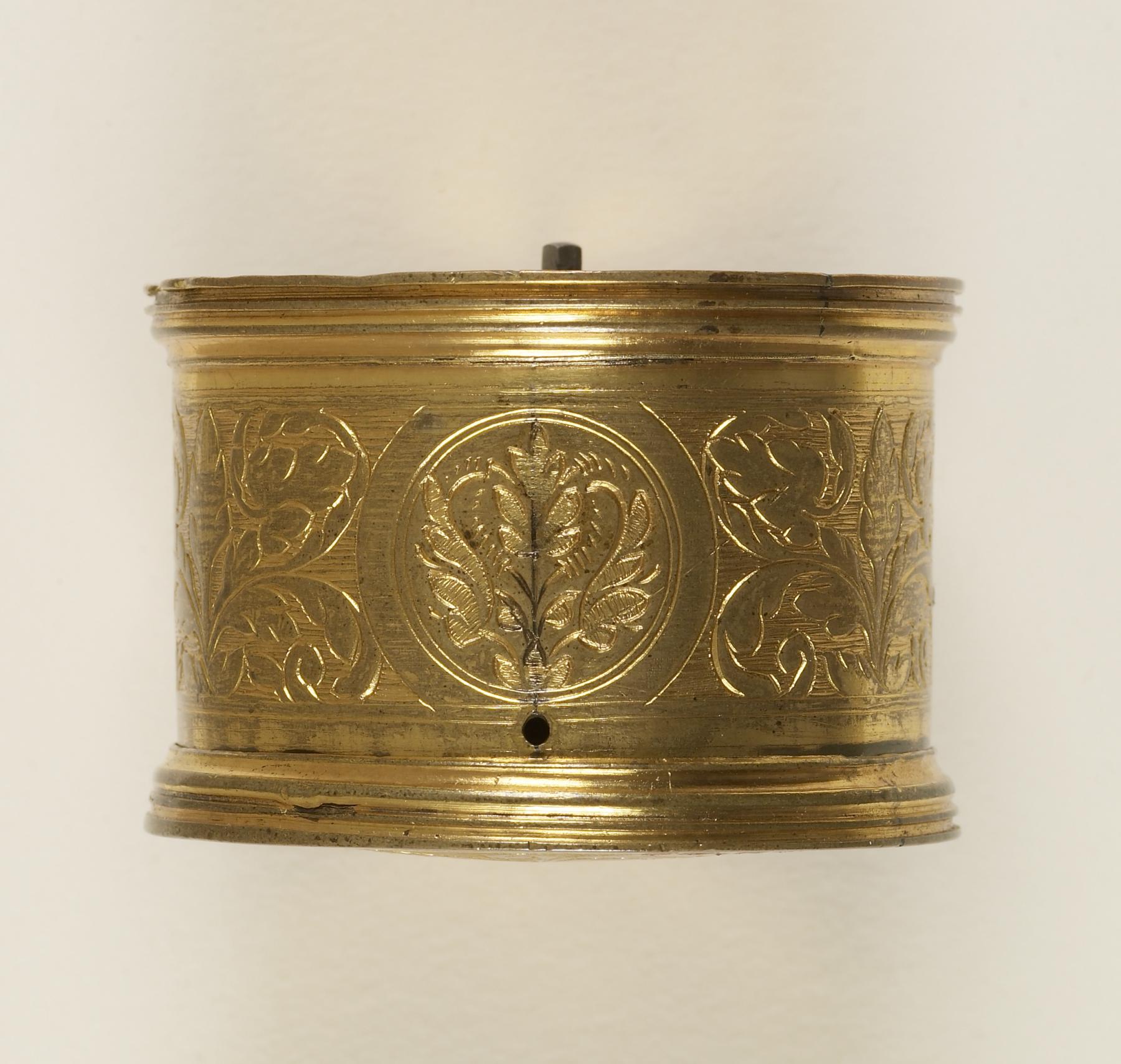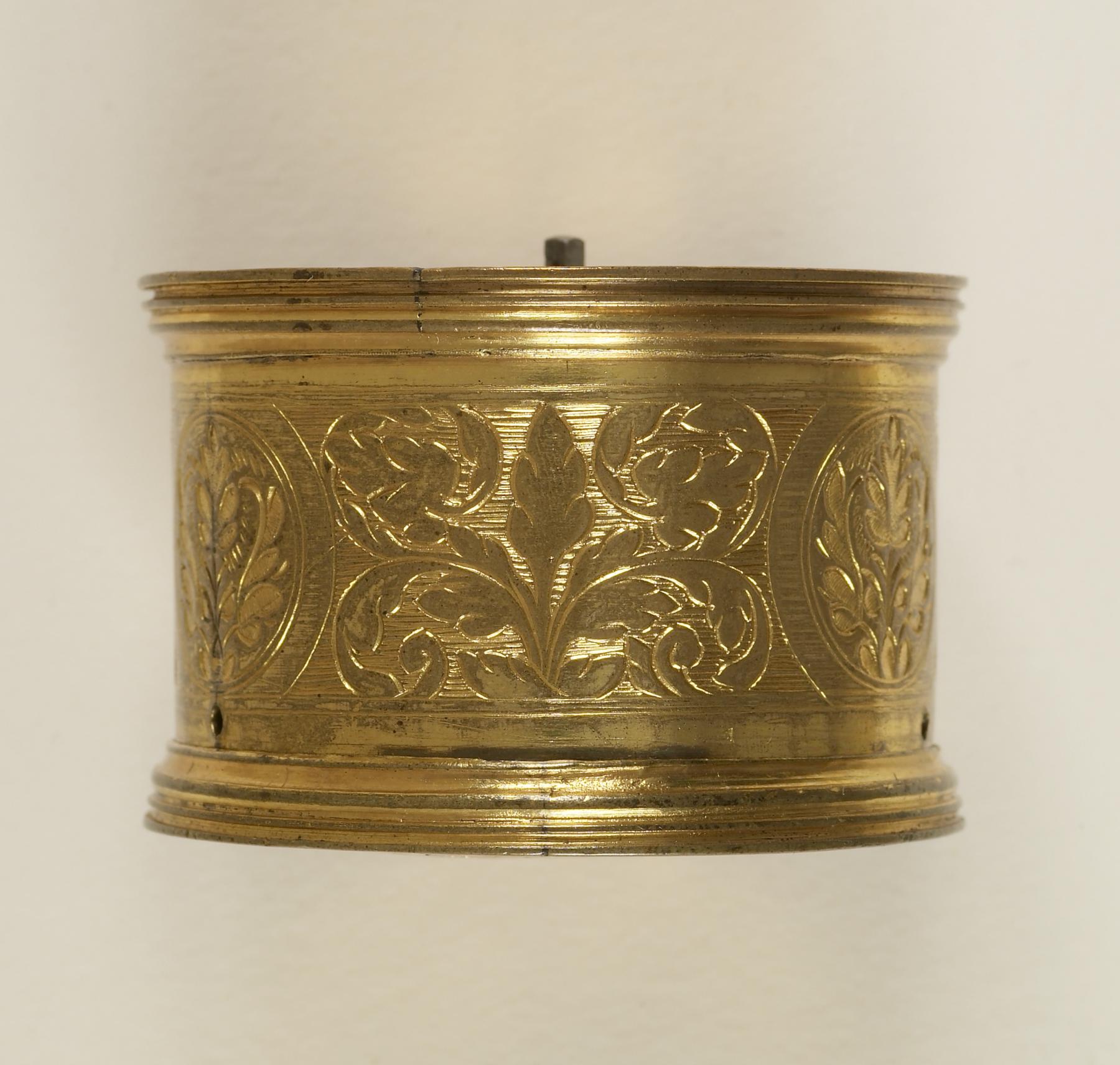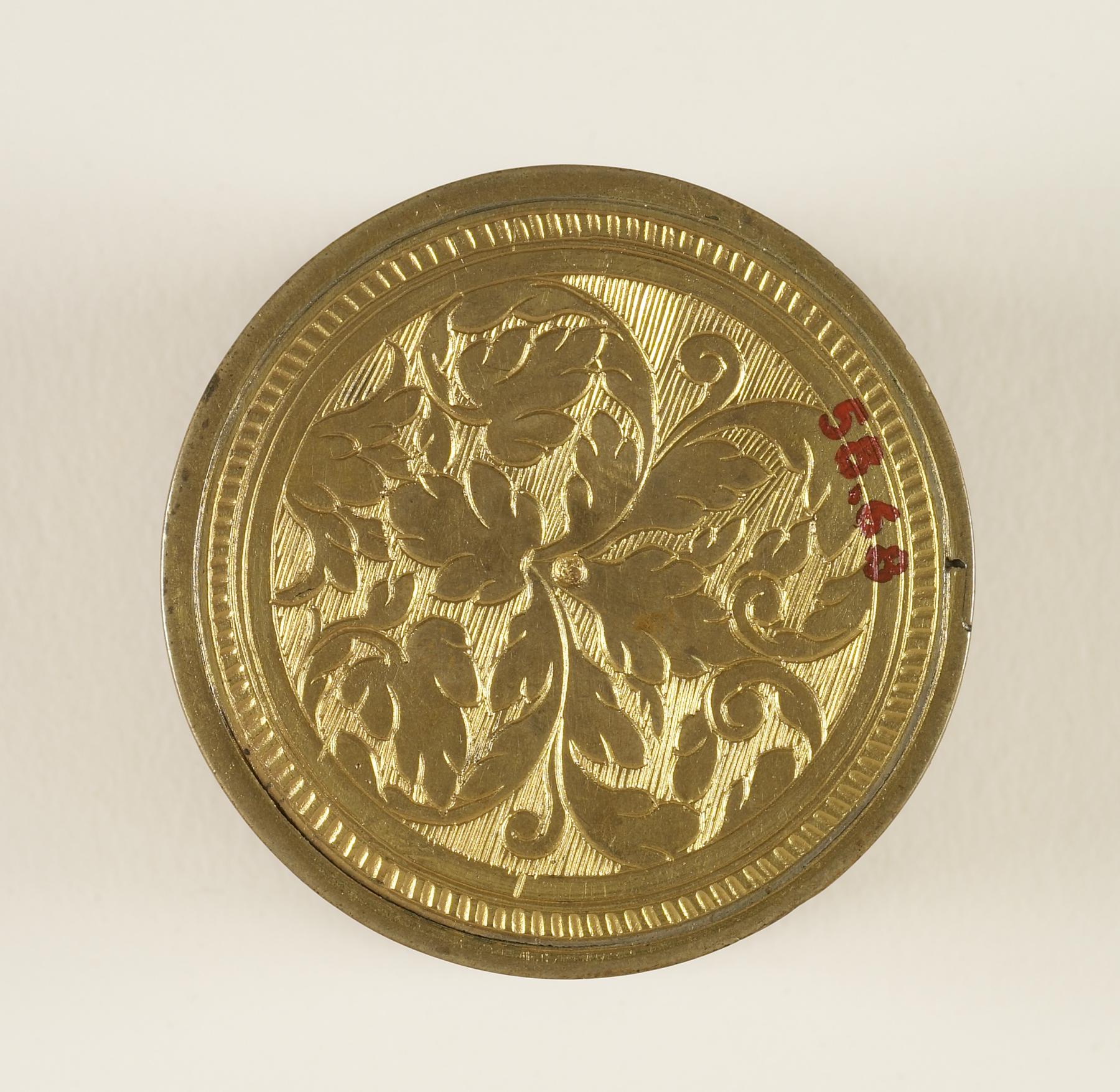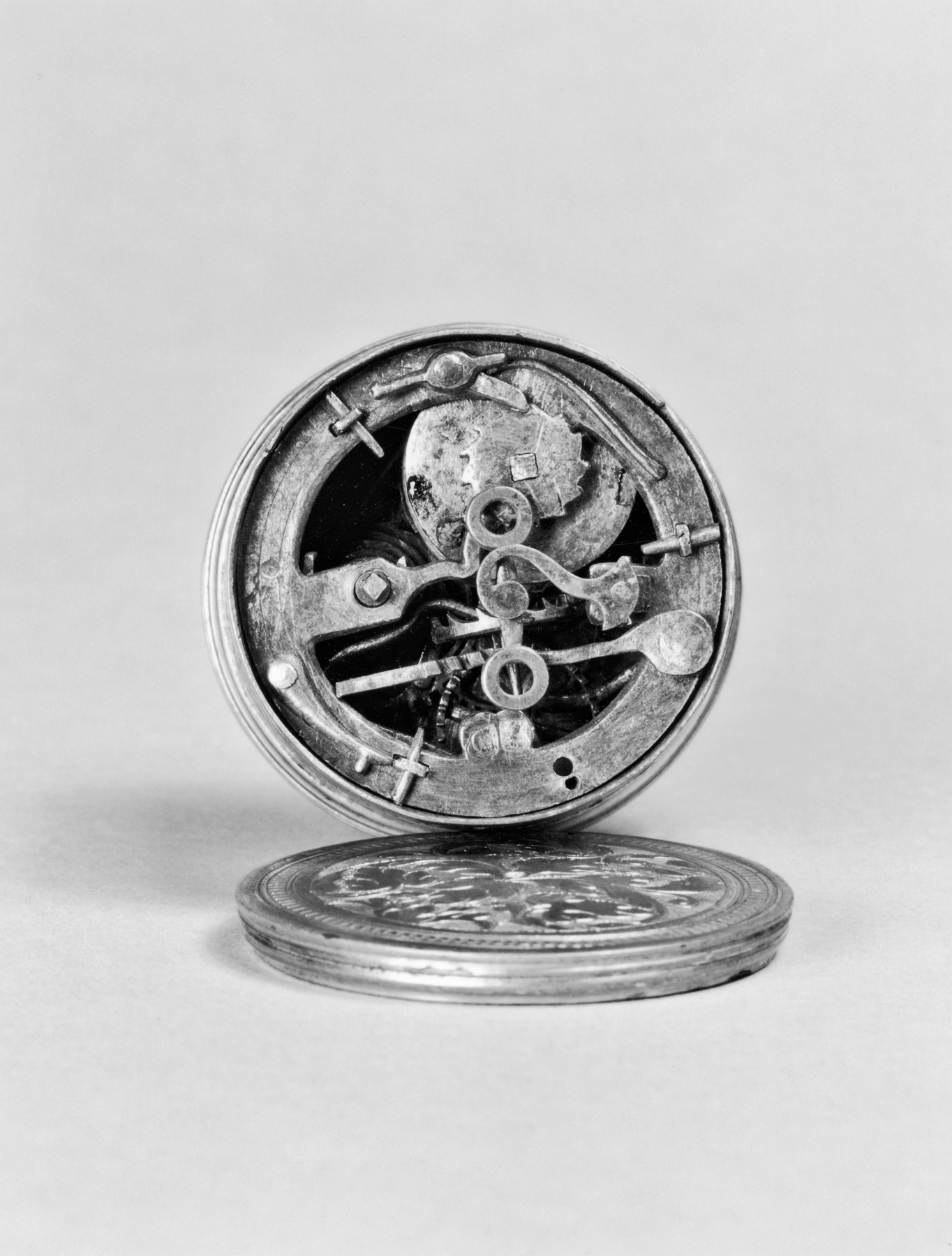Portable Drum Watch
(Renaissance Europe )
The raised dots, called "touch pieces," that are above the Roman numerals functioned much like Braille does today, allowing a blind person to read the time. A sighted owner could also use the touch pieces to check the time in the dark. The internal watch mechanism, the "movement," is made completely from iron, as was typical from the early to mid-16th century. Later, brass and steel parts were increasingly used. The mechanism in Melanchthon's watch from 1530 (Walters 58.17) is similar, though it also has an alarm mechanism. The movement of this watch is stamped with a "C," a reference to its maker, and a pinecone, identifying it as having been made in Augsburg. It is not clear whether the first watches were drum-shaped or ball-shaped.
Inscription
Provenance
Provenance (from the French provenir, 'to come from/forth') is the chronology of the ownership, custody, or location of a historical object. Learn more about provenance at the Walters.
George Robinson Harding, London [date and mode of acquisition unknown]; Henry Walters, Baltimore, 1921 [mode of acquisition unknown]; Walters Art Museum, 1931, by bequest.
Exhibitions
| 2014-2015 | Henlein-Uhrenstreit (Henlein Watch Controversy). |
| 2002 | A Renaissance Gem Revealed: Petrarch's Triumphs Disbound. The Walters Art Museum, Baltimore. |
| 2000-2001 | Philip Melanchthon's Watch. The Walters Art Gallery, Baltimore. |
Conservation
| Date | Description | Narrative |
|---|---|---|
| 5/13/1958 | Treatment | cleaned |
| 2/22/2000 | Treatment | examined for condition; cleaned |
Geographies
Germany, Augsburg (Place of Origin)
Measurements
1 1/8 x 1 15/16 in. (2.8 x 5 cm) (h. x d.)
Credit Line
Acquired by Henry Walters, 1921
Location in Museum
Accession Number
In libraries, galleries, museums, and archives, an accession number is a unique identifier assigned to each object in the collection.
In libraries, galleries, museums, and archives, an accession number is a unique identifier assigned to each object in the collection.
58.68












